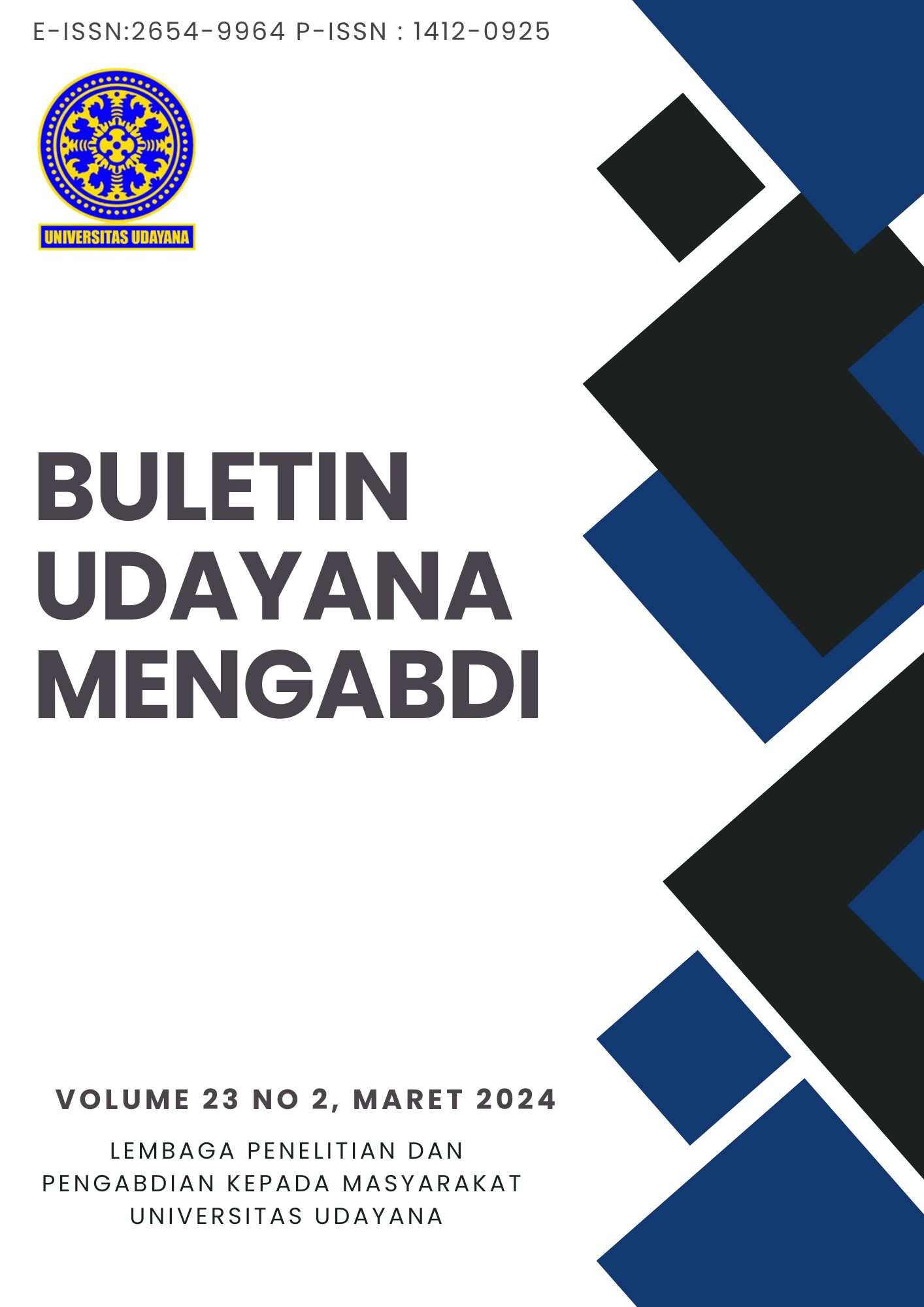PENERAPAN KONSELING KELOMPOK UNTUK MENINGKATKAN KESEJAHTERAAN SUBYEKTIF WARGA BINAAN DI LAPAS KEROBOKAN
Abstract
The results of the initial situation analysis show that some of the inmates in the Kerobokan Prison need psychological assistance to increase life satisfaction or subjective well-being. High subjective well-being indicates that inmates have good life satisfaction. One of the activities that can be addressed to improve subjective well-being is cognitive-behavioral group counseling. As many as 20 inmates participated in group counseling activities. The results of the quantitative analysis did not find significant differences in the level of subjective well-being before and after the counseling activities. However, qualitatively, the participants stated that they felt cared for, supported and valued through the activities they carried out. The assisted residents hope that counseling activities can be carried out more frequently. The results of this activity imply that the provision of continuous psychological service assistance is still needed by inmates at the Kerobokan Prison.
Keywords: Counseling, Subjective Well-Being, SWB, Kerobokan Prison, Prison Residents
Downloads
References
Diener, E. (2000). Subjective well-being: The science of happiness and a proposal for a national index. American Psychologist, 55(1), 34-43. doi:10.1037//0003066X.55.1.34.
Diener, E., Wirtz, D., Tov, W., Kim-Prieto, C., Choi, D., Oishi, S., & Biswas-Diener, R. (2009). New measures of well-being: Flourishing and positive and negative feelings. Social Indicators, 39, 247-266.
Erford, B. T. (2015). 40 Techniques Every Counselor Should Know, Second Edition. USA: Pearson.
Fazel, S., Hayes, A. J., Bartellas, K., Clerici, M., & Trestman, R. (2016). The Mental Health of Prisoners: a Review of Prevalence, Adverse Outcomes and Interventions. Lancet Psychiatry, 3(9), 871-881. doi:10.1016/S2215-0366(16)30142-0.
Jebb, A. T., Tay, L., Diener, E., & Oishi, S. (2018). Happiness, income satiation and turning points around the world. Nature Human Behaviour, 2, 33–38. Dipetik Oktober 1, 2020, dari https://www.nature.com/articles/s41562-017-0277-0?mod=article_inline.
Kobau, R., Sniezek, J., Zack, M. M., Lucas, R. E., & Burns, A. (2010). Well‐being assessment: An evaluation of well‐being scales for public health and population estimates of well‐being among US adults. Applied Psychology: Health and Well-being, 2(3), 272-297. doi:http://dx.doi.org/10.1111/j.1758-0854.2010.01035.x.
Navarro, D. J., & Foxcroft, D. R. (2013). Learning statistics with jamovi: a tutorial for psychology students and other beginners (Version 0.70). doi:10.24384/hgc3-7p15
Steptoe, A., Deaton, A., & Stone, A. A. (2015). Subjective wellbeing, health, and ageing. The Lancet, 385(9968), 640-648. doi:https://doi.org/10.1016/S0140-6736(13)61489-0.
Tay, L., & Diener, E. (2011). Needs and Subjective Well-Being Around the World. Journal of Personality and Social Psychology, 101(2), 354-365. Dipetik Oktober 1, 2020, dari APA PsycNet: https://psycnet.apa.org/buy/2011-12249-001.
Wilani, N., Fridari, I., Dwidasmara, I., & Wibawa, I. (2020). Penerapan Praktik Meditasi Loving-Kindness Pada Warga Binaan di Lembaga Pemasyarakatan Klas IIA Kerobokan. Buletin Udayana Mengabdi, 19(2), 149-154. Dipetik Oktober 1, 2020, dari https://ojs.unud.ac.id/index.php/jum/article/view/56843.

This work is licensed under a Creative Commons Attribution-ShareAlike 4.0 International License.

This work is licensed under a Creative Commons Attribution-ShareAlike 4.0 International License.




.png)


1.png) GARUDA - GARBA RUJUKAN DIGITAL
GARUDA - GARBA RUJUKAN DIGITAL



